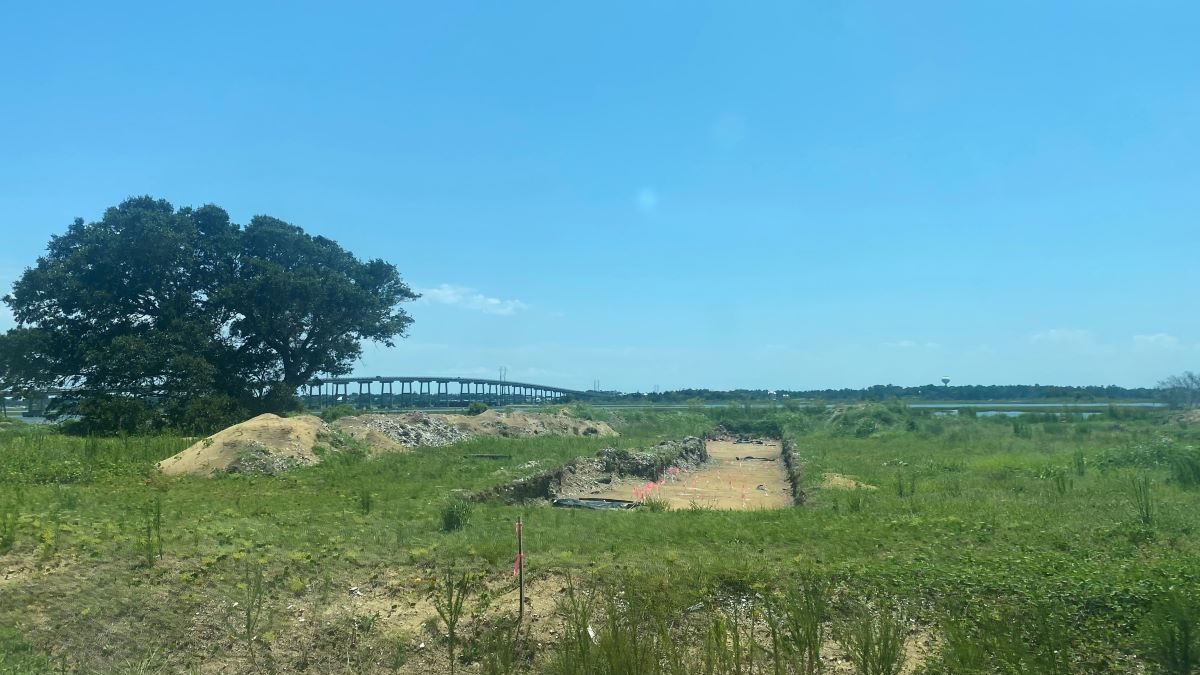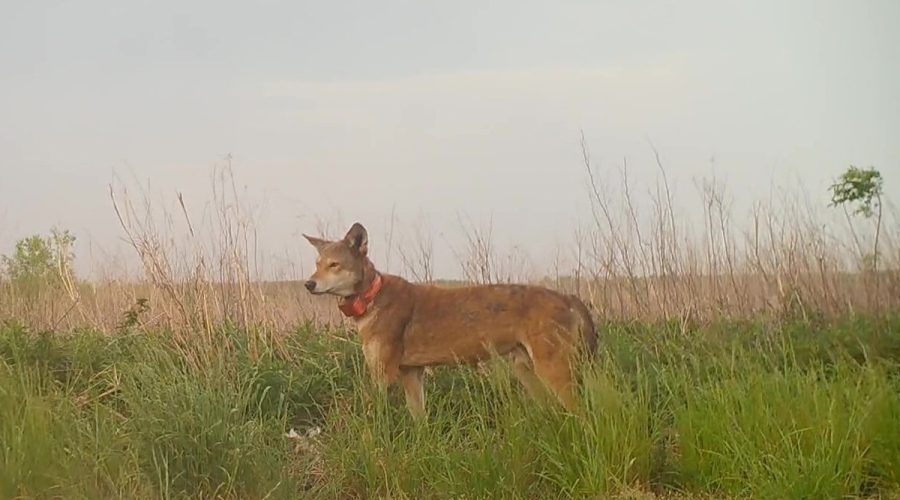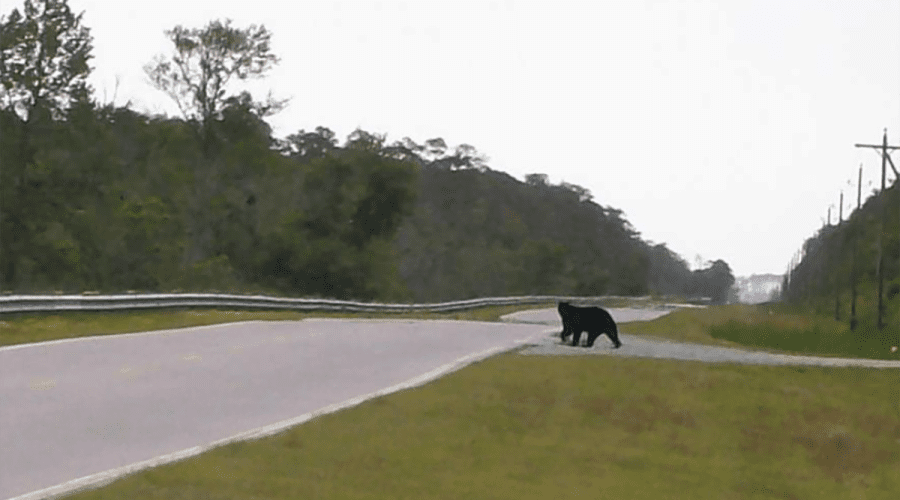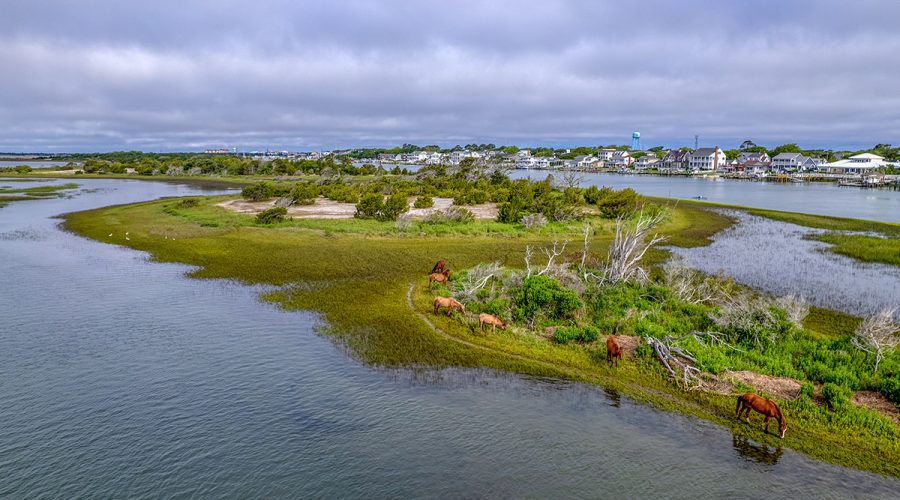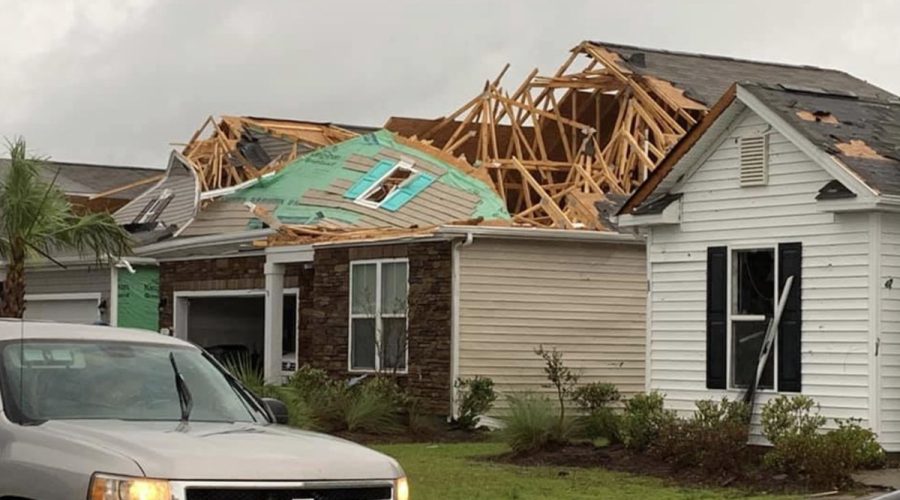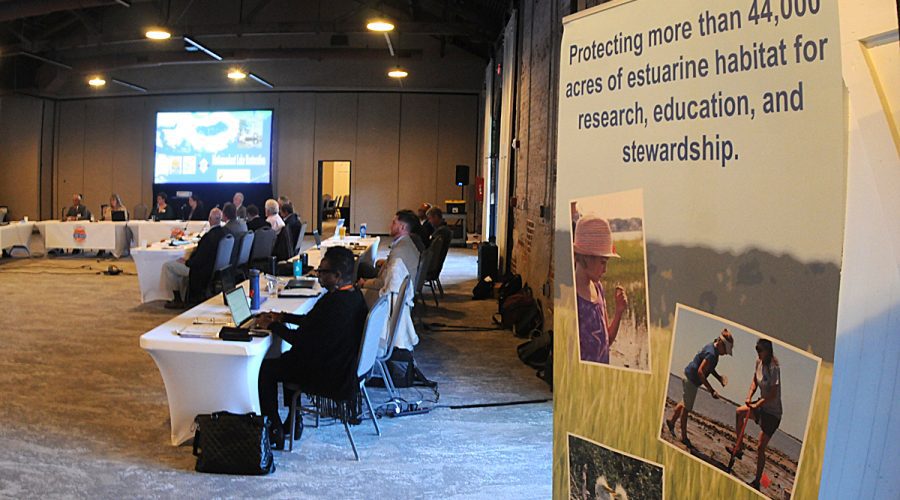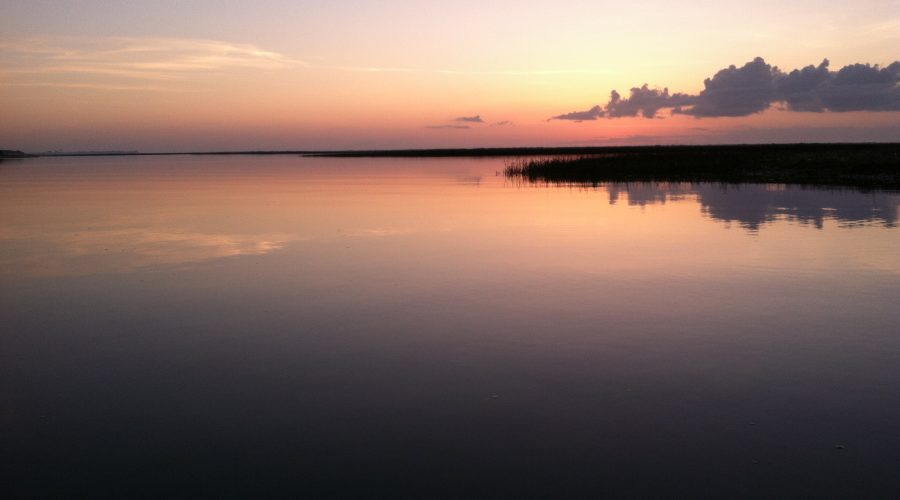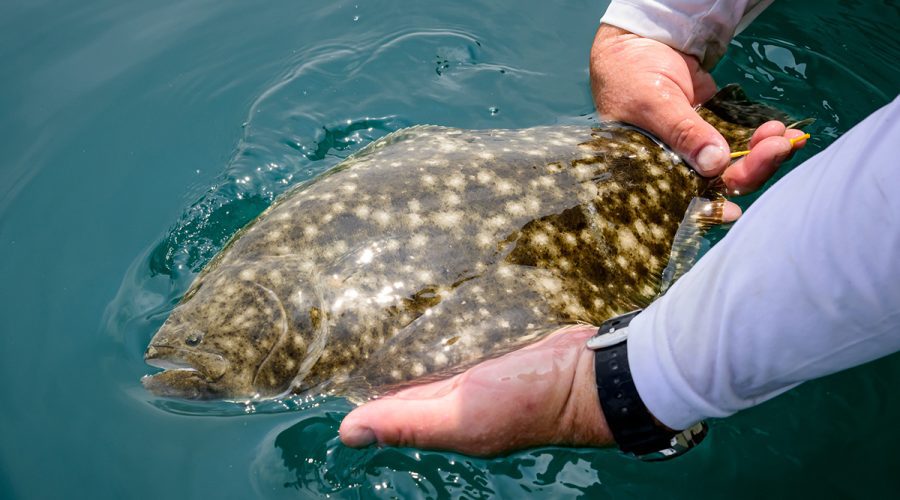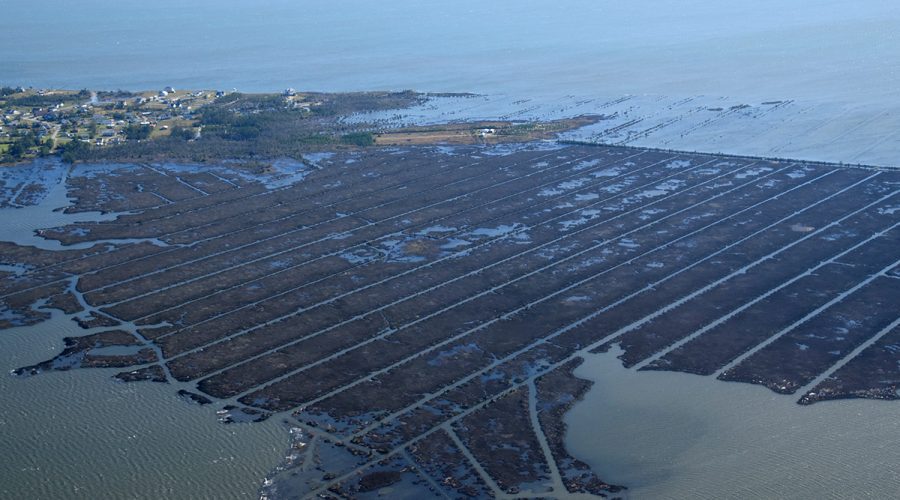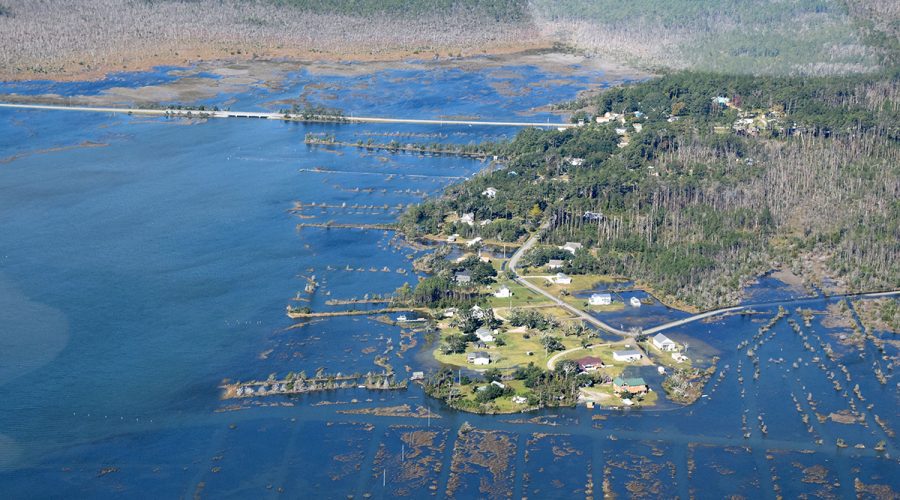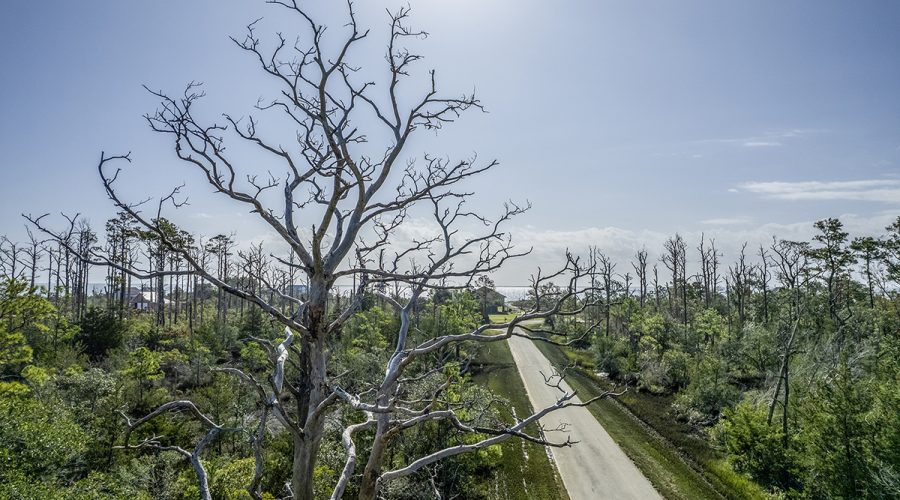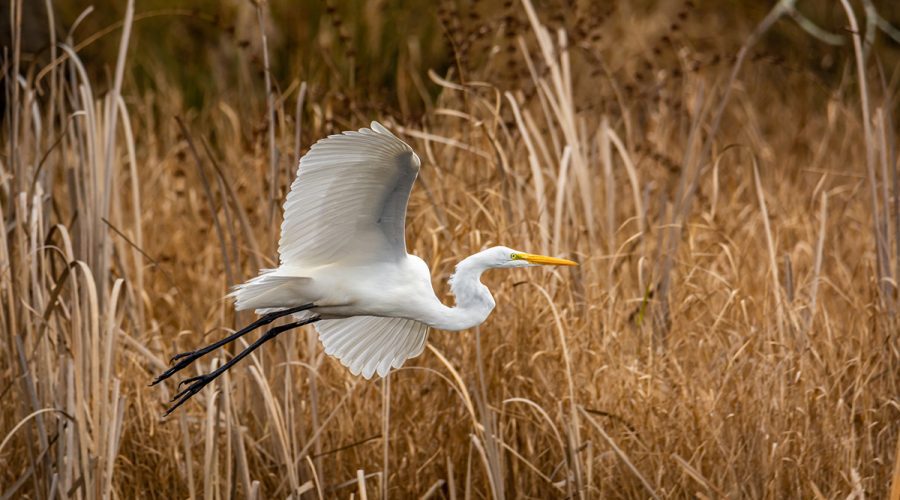Language to “rein in” the Division of Coastal Management’s authority has been removed, but a Coastal Area Management Act review could return during the next session.
Special Reports
Biologists, advocates push for more wildlife crossing funds
Proponents of the federal Red Wolf Recovery Program say more protected highway wildlife crossings in the Alligator River National Wildlife Refuge would benefit all species.
Wildlife crossings gain visibility, financial support in state
Alligator River National Wildlife Refuge officials are working with the Wildlife Resources Commission and the Department of Transportation to build wildlife crossings at each end of the Alligator River replacement bridge between Tyrrell and Dare counties, and more could be built.
Rachel Carson Reserve: Beaufort’s barrier to raging storms
In our ongoing look at the Coastal Area Management Act’s 50th anniversary this year, this Carteret County jewel of the Coastal Reserve Program also provides important protection.
Coastal property owners yet to embrace roof-girding grants
The North Carolina Insurance Underwriting Association, or Beach Plan, has yet to reach the number of property owners who could benefit from its Strengthen Your Roof grant program.
Anti-regulation sentiment may be fueling insurance crisis
With the N.C. Homebuilders Association’s influence over the legislature, steps toward resilience that Insurance Commissioner Mike Causey and others say should be taken have been rejected, contributing to coverage chaos for property owners.
Coastal Resources Commission celebrates CAMA’s 50th
The state Coastal Resources Commission this week in Wilmington featured an observance and look back at the N.C. Coastal Area Management Act’s first 50 years.
Reflections on 50 years of NC Coastal Area Management Act
When first considered 50 years ago, North Carolina’s Coastal Area Management Act was hotly controversial environmental legislation, and despite challenges past and present, it remains the state’s only attempt to forge a partnership for regional resource management.
Agencies acknowledge confusion fisheries conflict creates
Officials agree that the public is caught in the middle of inconsistent state fisheries regulations enacted by the state Wildlife Resources Commission and Marine Fisheries Commission for inland and coastal waters, respectively.
Dolan, Godfrey: Scientists proved Outer Banks are moving
Findings more than 50 years ago by coastal geologist Robert Dolan and husband-and-wife researchers Paul and Melinda Godfrey changed barrier island understanding and led the National Park Service to reverse longstanding policy.
Agencies’ joint rules conflict set ‘stage for a showdown’
The conflict between the Marine Fisheries Commission and Wildlife Resources Commission appears to have begun when the two state agencies decided to work together in 2018 on delineating jointly managed waters.
Conflicting mullet, flounder seasons signal bigger problems
Seasons for popular fish in coastal and inland waters, which are subject to separate rules, didn’t coincide this year for the first time in years, laying bare a conflict between agencies that share regulatory authority over joint waters.
Community Conversation: Plans for ‘next Florence’ emerge
Special Report: Hurricane Florence five years ago forced new thinking about adaptation and resiliency, especially in North Carolina’s most vulnerable coastal areas.
Florence’s scars heal slowly as change becomes more visible
Special report: Five years after Hurricane Florence battered and drenched Down East Carteret County, much has changed, but solutions are elusive.
Changes from Hurricane Florence Down East still visible
New series: The Down East Resilience Network brought together state agency representatives, scientists, residents and advocates for a two-day community conversation on changes Down East since the 2018 Category 1 storm and how to prepare for the next.
Pilot projects may prove vital in Currituck Sound restoration
Currituck Sound, once the crown jewel of the Atlantic Flyway, but migratory waterfowl counts have plummeted. Years of pilot projects and collaboration led to a working plan for restoring this important marsh habitat.

